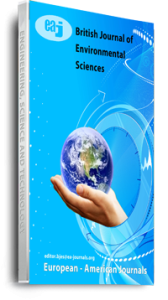An experiment was conducted to investigate the use of gas-permeable membrane systems to capture and recover ammonia from poultry houses. The objectives of the experiment were: 1) to evaluate the performance of two gas-permeable membrane ammonia-capturing system models and 2) to assess ammonia emission impact on birds’ mortality, and to investigate the relationship between birds age and ammonia emission in rooms equipped with and without these systems. The systems were developed and placed inside a 6.0 m X 6.0 m room in a research poultry house. The systems were started by preparing 5N sulfuric acid in an acid tank and a pH 1 solution in a concentration tank. Acids were added to the concentration tank manually to achieve a pH of 2.0, and then the pH pump controller and the membrane circulation modules were used to bring the pH back to 1. After NH3 gas passed through the membrane and was in contact with the acidic solution, ammonium (NH4+) salt was formed, which was retained and concentrated in the acidic solution. The experiment consisted of two treatments namely: 1) Control (room without membrane systems (RWOMS), and 2) treatment (room with both membrane systems (RWMS). Each room contained 400 birds. The results demonstrated a significant (p<0.05) difference of air ammonia concentration between rooms and from poultry litter. Among the membrane systems, tubular membrane system had the greatest mean NH4+ recovery compared to the flat membrane system. The difference was highly significant (p<0.01). Birds’ mortality rate was decreased by ~46.6% in room with the installed systems indicating that reduced ammonia resulted in improved bird survival. The findings of this study indicate that the membrane systems can be an effect method of reducing ammonia concentration in poultry houses with an added advantage of retaining ammonium salt has plant food.
Keywords: Ammonia, Ammonium, Gas‐Permeable Membrane, Poultry manure, Sulfuric Acid

